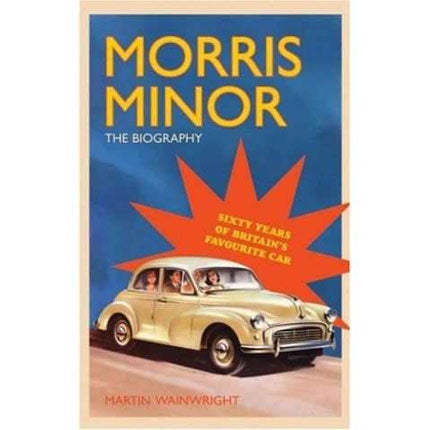Morris Minor: The biography, By Martin Wainwright
The pathological pursuit of a motoring icon and a Minor miracle

Which of today's cars might a thirtysomething recall in 2040 with a fugitive and unearthly fondness? A Smart car, perhaps: chic, cleavered, surreal; or maybe a Skoda, re-tailored, yet eternally low-tech.
Martin Wainwright's new "biography" of the Morris Minor reminds us that, sometimes, it's a car's very inability to set the pulses racing that gives it sublimely aboriginal qualities. They become mystic cultural artefacts, parked in the blue remembered hills of memory, innocence and arrested development.
Wainwright's personalised account will induce pangs of guilt in those of a certain age who have never owned the car that made its designer Alex Issigonis famous, survived Lord Nuffield's initial doubts, and sold 1.6 million variants. I once travelled in a so-called Moggie driven by the journalist David Flintham in what rapidly became a mobile Disque Bleu humidor, from Bury St Edmunds to my father's home in Sussex, via his parents' newsagents in Crawley. How perfect, in retrospect, seems that stand-off between the shopping precinct's Brutalist ferroconcrete and the D-cup bulges of those rust-foxed wheel-arches.
Wainwright's recollections are seamed with chunks of the car's history. He is pathological in pursuit of even the most trifling detail and there hangs over this strange romance something of the pathos of the East Anglian (as opposed to Ford Anglian) wanderings of W G Sebald. In Wainwright's story of the Morris owner who parked at night next to a long-abandoned Minor on a ranch road in Guatemala, we even find a jolt of magic. Having settled down to read in the light of his headlamps, the fellow found himself surrounded by armed men who thought the wreck had come to life, and that he was a phantom.
This book will obviously become a transport of delight to many thousands. They will devour arcana such as the fact that a Morris Minor was driven by Anna Karina in Jean-Luc Godard's film Une Femme est Une Femme. Today, the car has become a fetish among fashionistas. Wainwright's unerringly common touch roots the car's supposedly pathetic qualities in a book that is, ultimately, a celebration of cultural detail, memory, obsession, and of lives lived by choice in the slow, humane lane.
Subscribe to Independent Premium to bookmark this article
Want to bookmark your favourite articles and stories to read or reference later? Start your Independent Premium subscription today.

Join our commenting forum
Join thought-provoking conversations, follow other Independent readers and see their replies
Comments